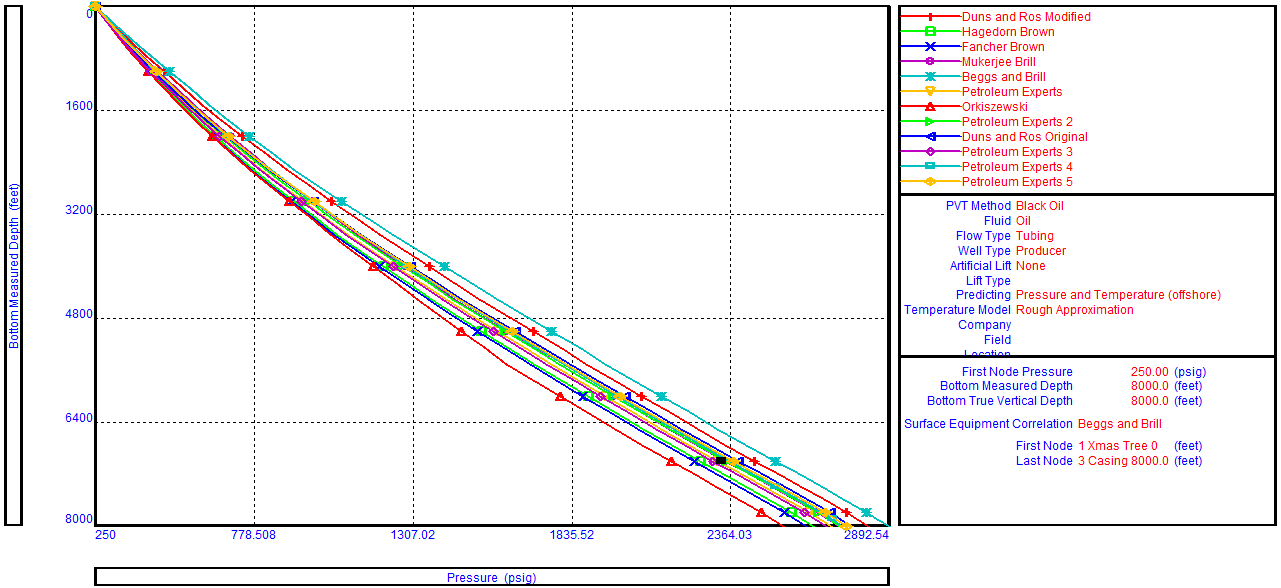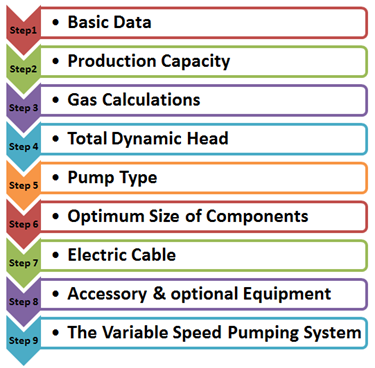The primary purpose of a multiphase flow correlations is to predict the liquid holdup (and hence the flowing mixture density) and the frictional pressure gradient. This article details the most widely used correlations for the prediction of the Vertical Lift Performance.
The oil and water are lumped together as one equivalent fluid. Thus flow correlations in common use consider liquid/gas interactions. They are therefore more correctly termed two-phase flow correlations. Depending on the particular correlation, flow regimes are identified and specialized holdup and friction gradient calculations are applied for each flow regime.
There is no universal rule for selecting the best flow correlation for a given application. When an outflow performance simulator is used, it is recommended that a Correlation Comparison always be carried out. By inspecting the predicted flow regimes and pressure results, the User can select the correlation that best models the physical situation.

Multiphase flow correlations:
Fancher & Brown:
- Fancher and Brown is a no-slip correlation, with no flow regime map. Therefore, this correlation cannot be recommended for general use and it is provided for use as a quality control (should not be used for quantitative work).
- It gives the lowest possible value of Vertical lift Performance (VLP). Therefore, Measured data falling to the left of Fancher Brown on the correlation comparison plot indicates a problem with fluid density (i.e PVT) or field pressure data.
- According to Brown, it is only suitable for 2-3/8 – 2-7/8 inch tubing.
- It is for GLR less than 5000 scf/bbl and flow rates less than 400 bpd.
- It has its own friction factor model, which is independent of pipe roughness.





